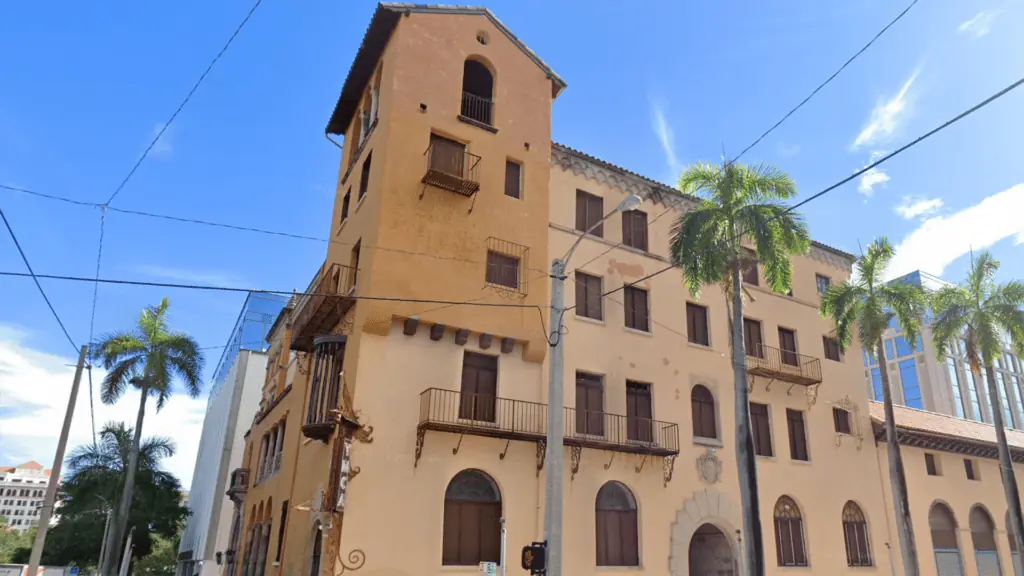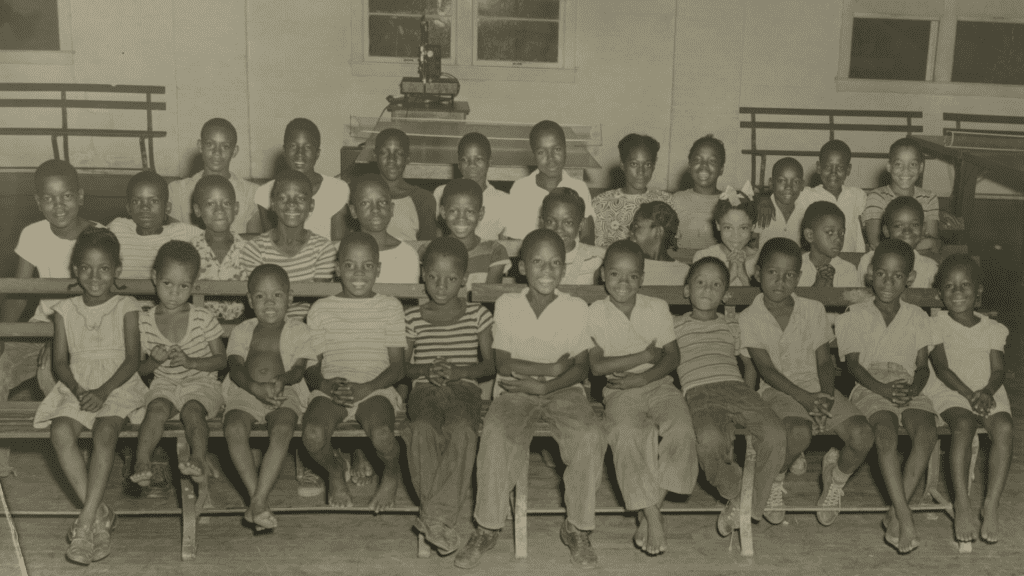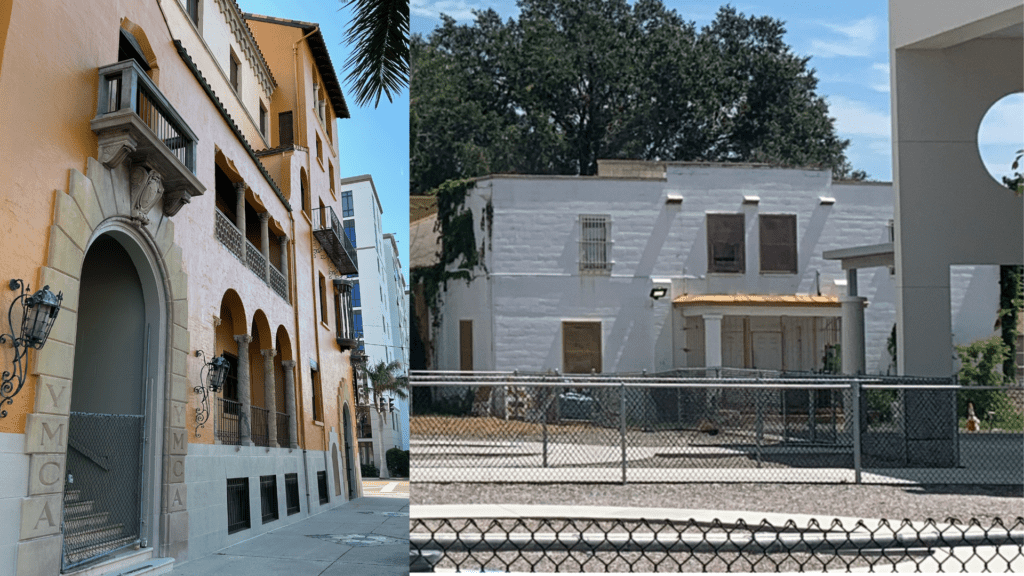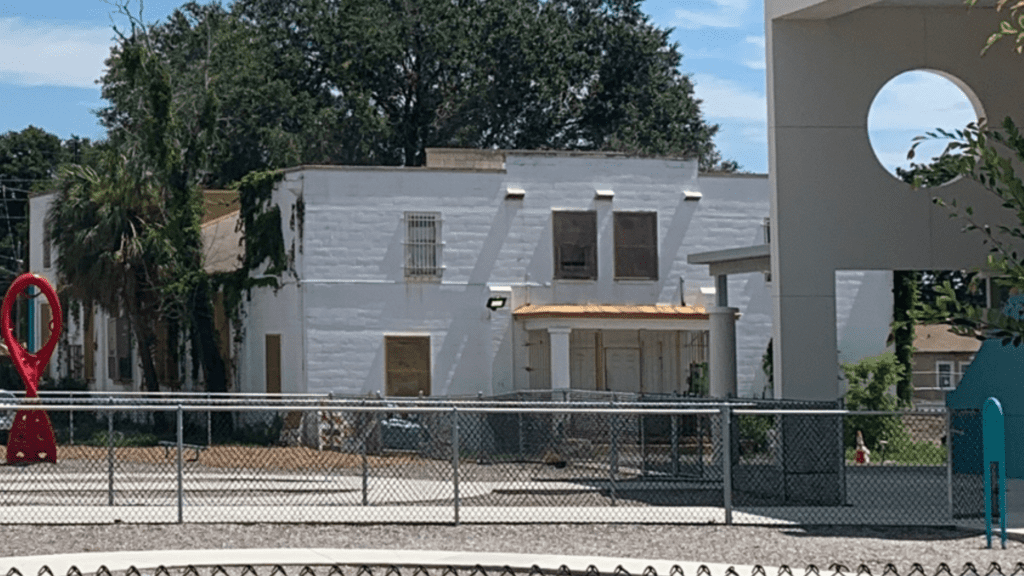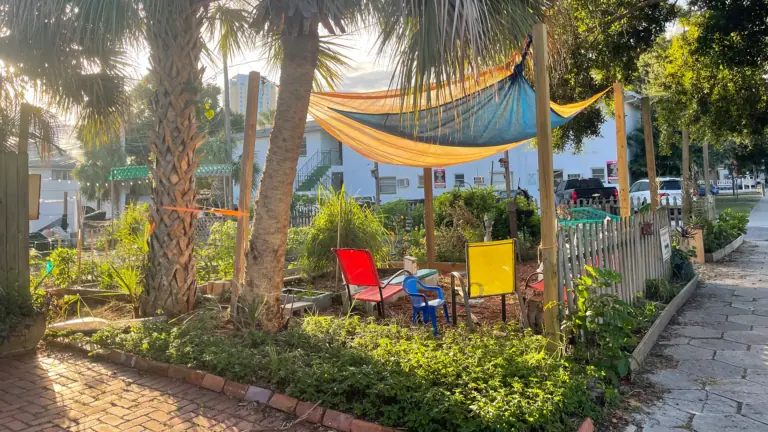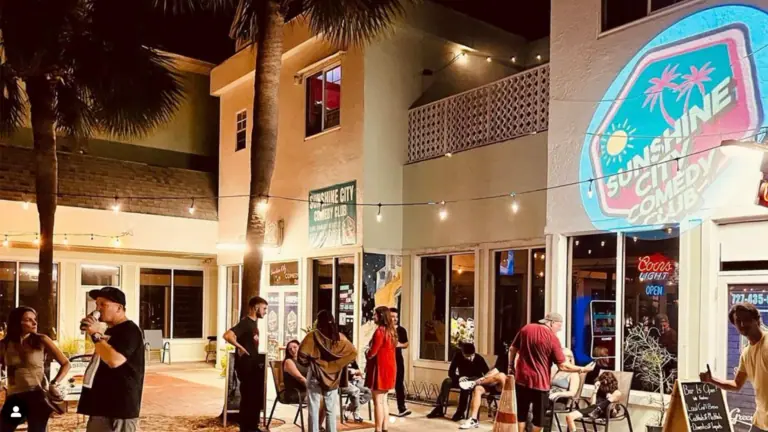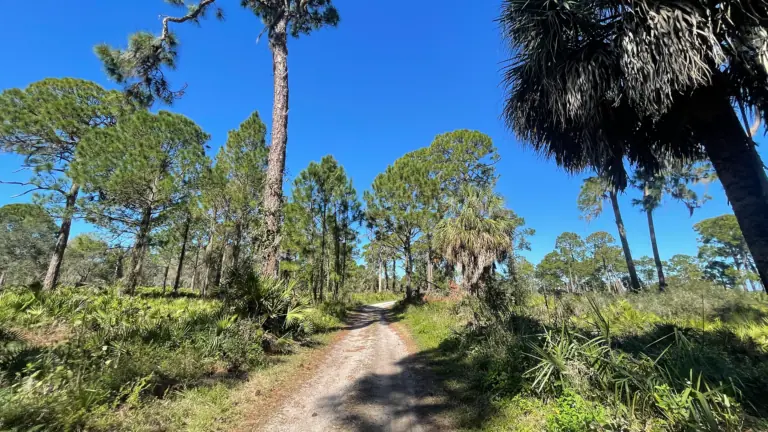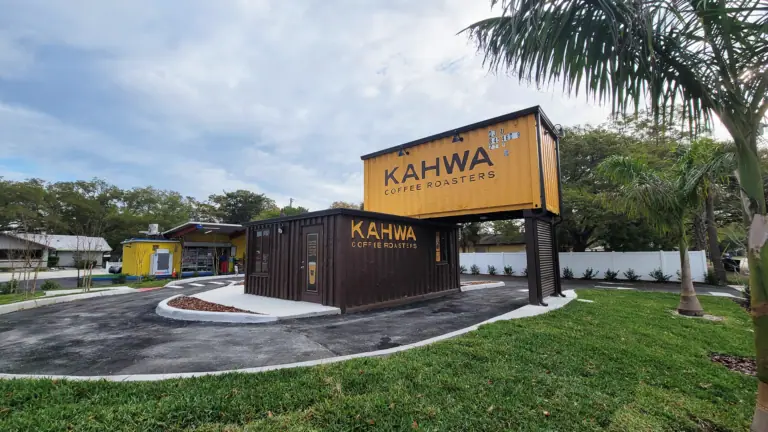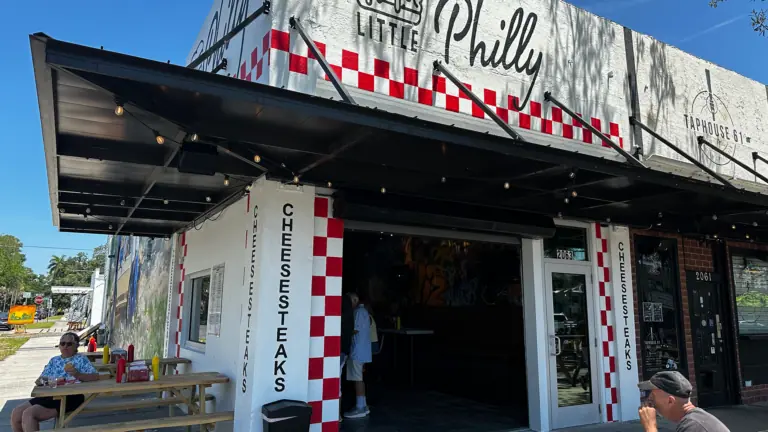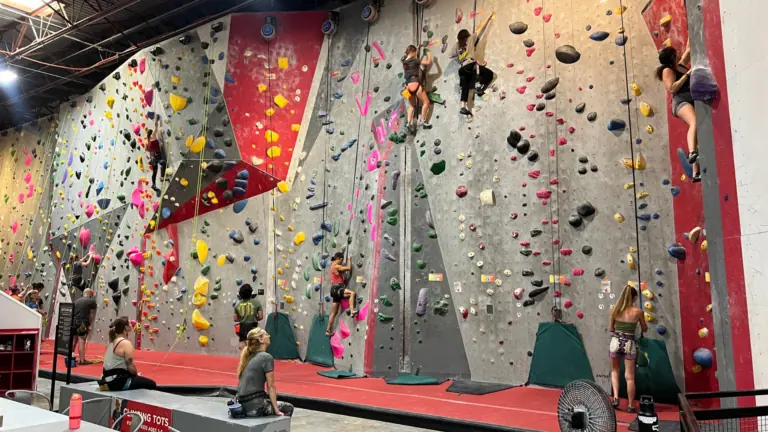This story is part of an ongoing series by local historian Monica Kile, highlighting the often unknown history of St. Pete. Kile came to St. Petersburg in 2003 to earn her Masters in Liberal Arts in Florida Studies at USFSP, focusing on heritage tourism. She has been leading historic tours in St. Petersburg and across the state for twenty years.
I am asked about the Historic YMCA building more than any other structure in St. Petersburg. It is one of the most beautiful buildings still remaining in downtown St. Pete, and though it is designated a local historic landmark, its future is unknown.
I am almost never asked about the building’s one-time counterpart, once officially known as the “Colored YMCA.” It also remains standing, on the campus of today’s Melrose Elementary. Also a locally designated landmark, its fate, too, remains uncertain, as the Pinellas County School Board seeks to redevelop that portion of the school’s campus.
ADVERTISEMENT
These two buildings, one grand and one humble, are a tangible reminder of St. Petersburg’s segregationist past. As St. Petersburg booms once more, many new residents, and even some long-time ones, seem unaware of this dark side of the Sunshine City’s past.
St. Petersburg was founded in 1888 and some of our earliest residents were the families of the African-American men who built the Orange Belt Railroad that put St. Pete on the map. A handful of them chose to settle in the new city, creating a neighborhood along the railroad tracks (at today’s 1st Avenue South, near MLK Street.) From there grew a vibrant, close-knit community of black residents that developed in tandem with the city; the African-American population has consistently been about 15-20% of the city’s overall population.
In St. Petersburg’s earliest years, the dividing lines between white and black were less stark than they would become later. With few people living in the city, black and white residents lived and worked together closely. But as the city’s reputation as a resort destination grew in the 1910s and 1920s, a stark divide rose between the black and white communities. Residential, educational, and social segregation became the new normal. Decreed and enforced by white civic leaders, segregation practices demanded that blacks and whites live in separate neighborhoods, attend different schools, and shop and socialize in different locations.
ADVERTISEMENT
Separate, but most certainly not equal. The YMCA serves as a perfect example of this often forgotten division of the races.
The stunning Mediterranean Revival style building that people admire today was opened on June 20, 1927; heralded as a triumph for a burgeoning city. Downtown took on a festive atmosphere on the day of the building’s opening. Popular local baritone Gordon Osterhout and the YMCA boys band provided entertainment. City leaders delivered laudatory speeches, and Pinellas County officials and state legislators added their praise. The St. Petersburg Times published more than three pages of photos and text about the opening.
The new headquarters included a gymnasium, swimming pool, separate men’s and boys’ locker rooms, a dormitory, work and social rooms, offices, a lunchroom and cafeteria, showers, and a running track with 26 laps to the mile.
Like every other social and civic organization in the City, the YMCA building was for white residents only. For nearly 20 years, no comparable organization existed for the black community in St. Petersburg.
That changed in June of 1945, after years of efforts from black leaders resulted in the opening of St. Petersburg’s Colored Branch of the YMCA. They were asked to change their name two years later when the National YMCA organization stated that no branch of a YMCA could be named after a racial group. St. Pete’s Colored Branch chose the new name Melrose Park YMCA. It received independent designation in 1954 after years of tireless work by its Executive Secretary, Dean Mohr.
Dean Mohr is an unsung hero in St. Petersburg’s history. A lifelong employee of the YMCA organization, he went to college on a YMCA scholarship, and worked for the YMCA in Ohio, Illinois, and Georgia. He was a veteran of World War I, and spearheaded the USO-YMCA. Upon taking the St. Petersburg job he became the first black YMCA Director in the State of Florida. He led the organization until his retirement in 1974. During Mohr’s time as the Director of the Melrose Park YMCA, it became the most influential black youth organization in St. Petersburg.
After years of bouncing around different locations, in 1957 the Melrose Park YMCA moved its operations into the Clubhouse of the City Federation of Colored Women’s Clubs at 1801 Melrose Avenue South. At its dedication in 1942, the Melrose Clubhouse was the only public civic center for people of color in St. Petersburg. Much of the planning for local chapters of organizations such as the NAACP, and the National Council of Negro Women occurred at the clubhouse.
It was also the site where young Albert Allen, a Gibbs High School Senior, was granted the first award of Eagle Scout extended to an African American young man in St. Petersburg. The Melrose Park YMCA would remain at this location until it closed in the late 1970s.
In 1965 Directors of St. Petersburg’s downtown YMCA signed a pledge that the organization would not practice racial discrimination, a reversal of the Y’s long-standing, unwritten, segregation policy (the move was prompted by a threat from the United Fund that funding would cease for organizations that were segregated.) Although black children were now allowed to participate in sports programs at the downtown facility, a 1969 St. Petersburg Times article on the two YMCA locations was titled: “St. Petersburg Ys: One Happy, One Humble.”
The article showed that stark contrasts remained between what was known as the Downtown YMCA and the Melrose Park YMCA; most obviously the facilities of the grand pink palace of the downtown YMCA versus the ramshackle building of the Melrose Y. The budgets showed even sharper discrepancies, with the Downtown Y’s annual operating budget dwarfing that of the Melrose Y, even when differences in membership and programming were accounted for. Although the organizations had been desegregated legally, in practice sharp divisions remained.
The Melrose YMCA finally closed in the late 1970s, and the Downtown YMCA building was sold in 2001 when the Jim and Heather Gills YMCA opened on 1st Avenue South and 31st Street.
The buildings remain today as stark reminders of our city’s segregated past. They represent a period of our history that is often overlooked, or perhaps never known, by many residents of the city. The process of breaking down St. Petersburg’s long-standing racial divisions in the 1950s, 60s, and 70s, was fraught with conflict, struggle, courage, determination, and sometimes violence.
The YMCA represents just one of many stories. There are others to tell of the desegregation of local schools, the police force, spring training and public facilities like the Spa Beach and Pool. Let’s not forget these stories, and the black citizens that lived them.
To learn more about some of the history of St. Pete, you can join Monica Kile on one of her historic walking tours of St. Pete.
What to read next:
- From cafeteria to craft brewery: The evolution of Orange Blossom and St. Pete’s cafeterias
- St. Pete history: Art House rises where the last train departed
- 7 dates added for our historic downtown and waterfront St. Pete walking tours
- History Half Hour – a Master Class all about the Sunshine City
- The Don Cesar celebrates 95 years of incredible beachfront history
ADVERTISEMENT






